
- Source: Hyperallergic
- Author: Sarah Rose Sharp
- Date: December 08, 2016
- Format: DIGITAL
Stepping into an Uncanny Reconstruction of a Detroit Apartment
The real apartment could not have provided a sharper contrast to the silent, windowless, blacked-over surfaces of the dark-side doppelgänger Anders Ruhwald has created in Cleveland.
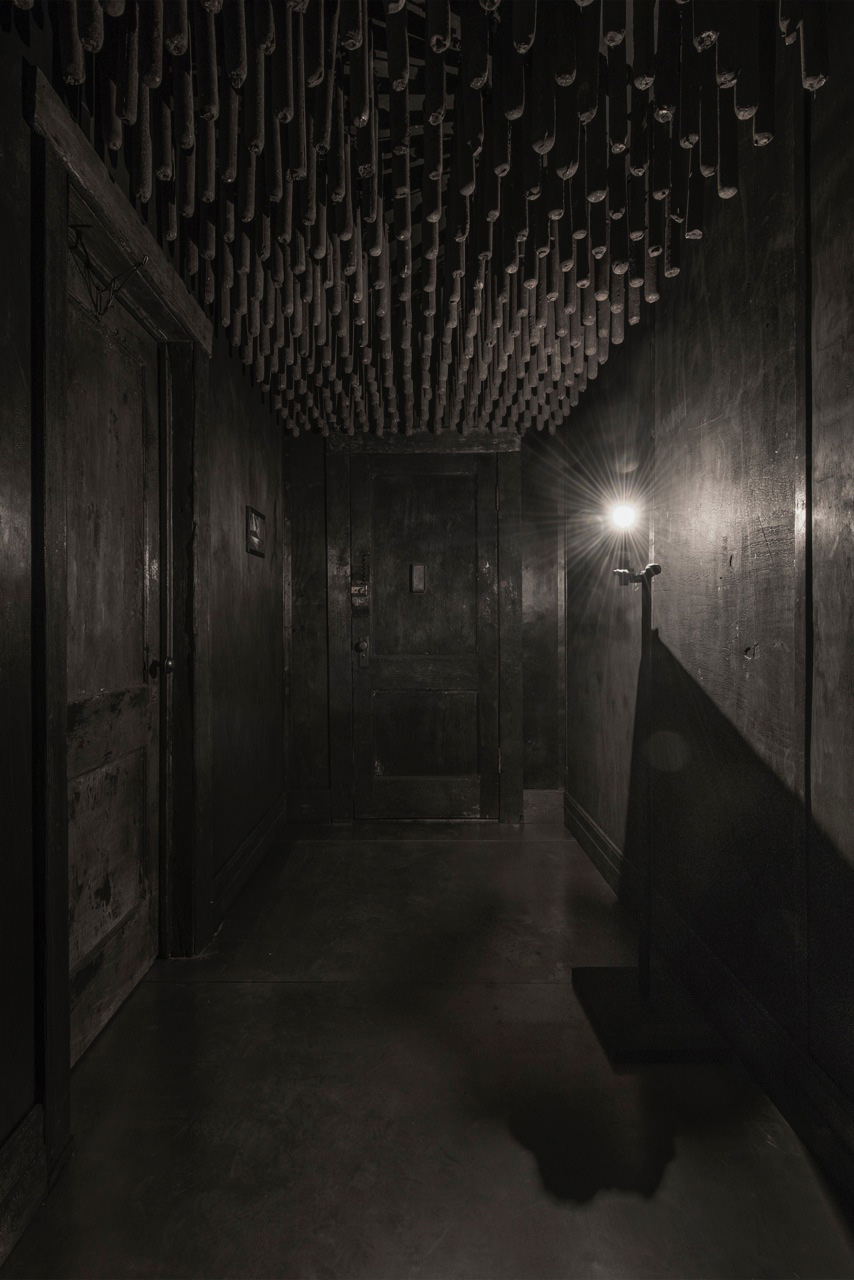
The foyer of Unit 1: 3583 Dubois by Anders Ruhwald (all images by Jerry Birchfield, courtesy the artist, Volume Gallery, and MoCA Cleveland)
CLEVELAND — Maybe I haven’t yet recovered from binge-watching Stranger Things, but my immediate reaction as I crossed the threshold into Unit 1: 3583 Dubois, an immersive installation work by Anders Ruhwald at the Museum of Contemporary Art Cleveland, was that I’d somehow stumbled into “the upside-down.” Ruhwald, a ceramic artist whose work has always displayed an extraordinary sensitivity to space, has meticulously reconstructed a Detroit apartment building he purchased back in 2014 for the purpose of the project. Mere weeks earlier, I had attended a birthday party at this location, and the clean, cheerful, and bustling environs of the real 3583 Dubois could not have provided a sharper contrast to the silent, windowless, blacked-over surfaces of the dark-side doppelgänger Ruhwald has created in Cleveland.
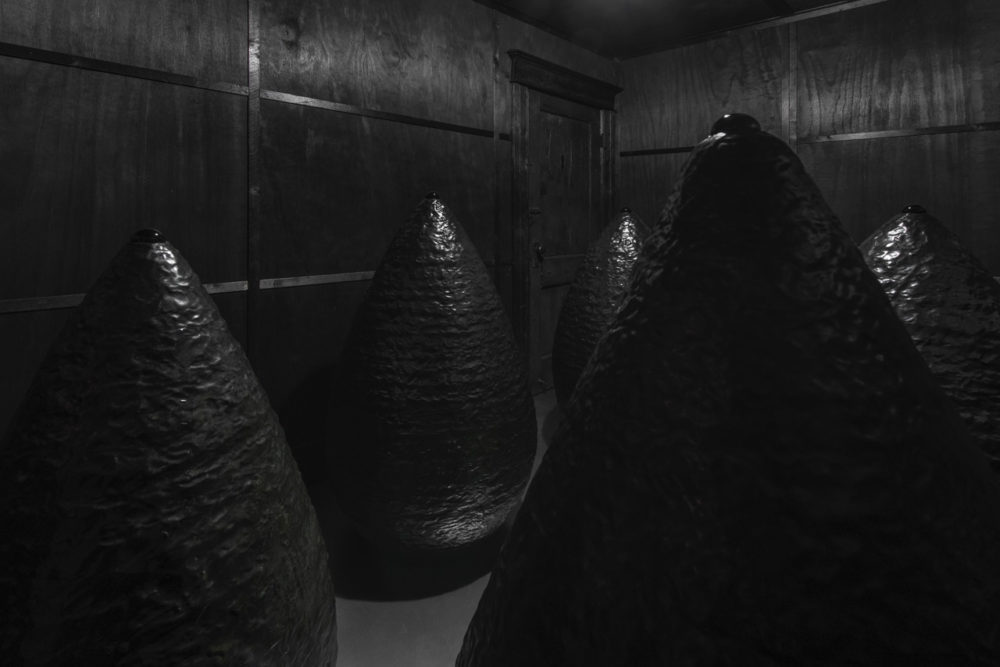
Unit 1: 3583 Dubois, installation view
“It’s the most ambitious and comprehensive installation we’ve ever done in that space,” said Megan Reich, deputy director of MOCA, in an interview with Hyperallergic. “I’m really proud that we’re doing it with an artist who’s working near here, and also someone like Anders, who is both global and rooted at the same time.”
Reich worked closely with Ruhwald as the project evolved and unfolded over a period of years, which included a 2015 iteration of the piece, The Charred Room, at Volume Gallery in Chicago. But whereas The Charred Room lifted elements out of the apartment and placed them in a bright, white gallery setting, Unit 1: 3583 Dubois pulls the viewer completely out of the museum space, forcing an unsteady exploration of a dark and uncertain landscape, which directly mirrors the architecture of the apartment on Dubois, minus the windows, and is populated by a number of large ceramic forms.
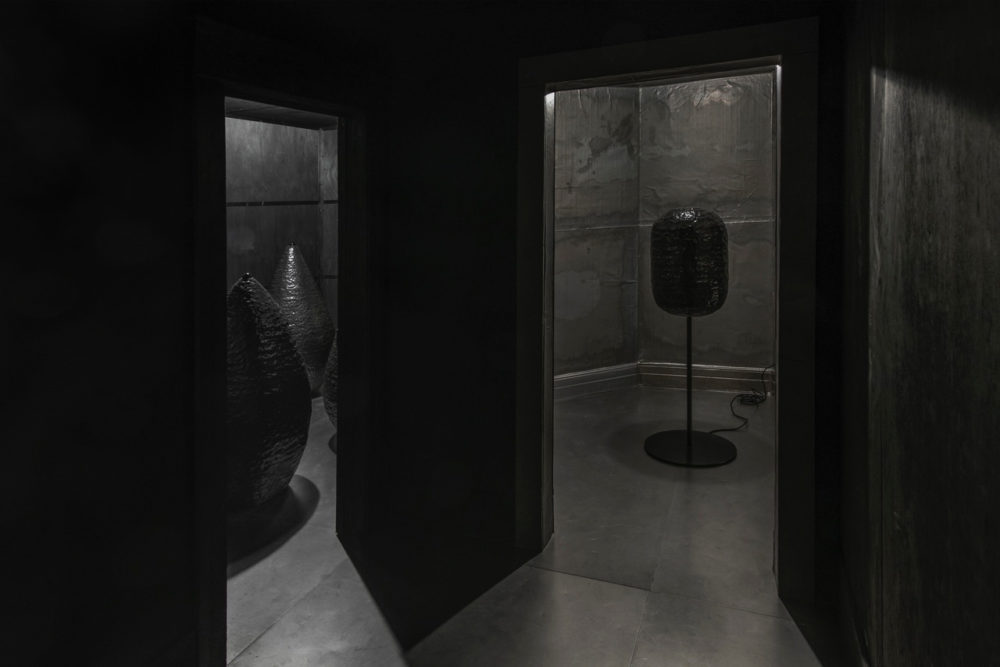
Unit 1: 3583 Dubois, installation view
“I had long been wanting to do a project that engaged with a domestic space and changed it over permanently,” said Ruhwald in an email interview with Hyperallergic. He wrote from Design Miami, where he was showing pieces related to Unit 1: 3583 Dubois, as well as a new body of work called Glasur-Stykke, at Volume Gallery’s booth. “To me, the domestic has a very specific resonance with artwork and I see it as being the one thing that the museum/gallery world is trying to shy away from and trying to keep out from the reading of work. I wanted a place where people would not feel the institutional weight of the museum/gallery.”
To enter the exhibition, you must open a door with peeling white paint, installed flush within an otherwise unblemished and typical white wall. Once you pass through this liminal threshold and the door is shut, there is a feeling of complete otherworldliness and unpredictability. My thought, as I attempted to navigate this overwhelming environment, was that Ruhwald had successfully made a ghost of his viewer — it’s a place that seems like one you once knew, but is also entirely foreign. This might be thought of as a visit to a place of memory, or a commentary on a sense of alienation from the mundane nature of daily existence. Regardless, it’s difficult to escape a haunting feeling.
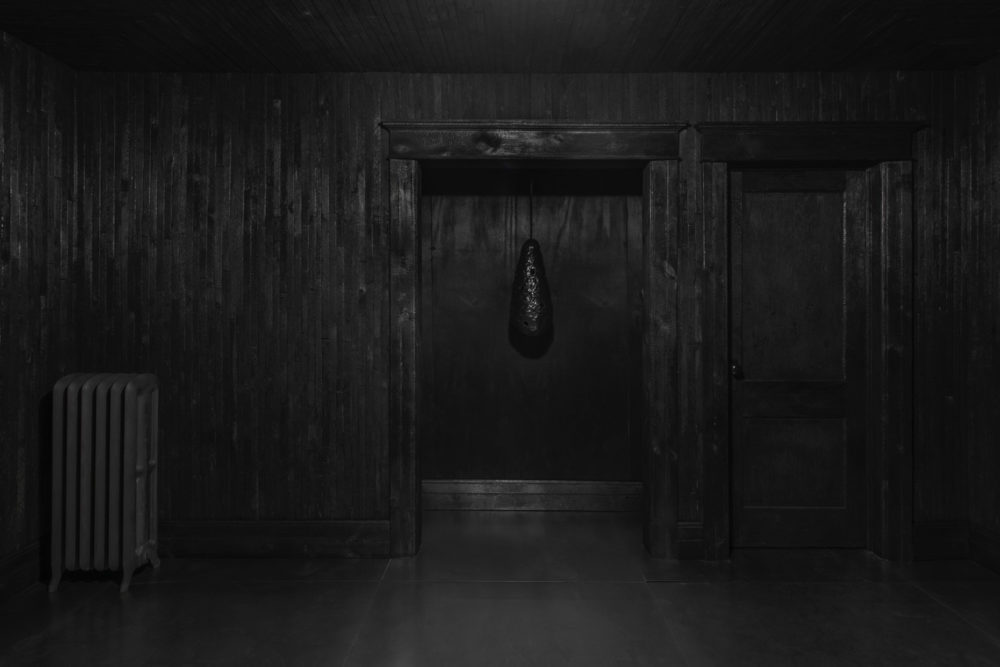
Unit 1: 3583 Dubois, installation view
“I don’t really believe in ghosts,” said Ruhwald, “but I believe in the idea of built-up history through use and in the idea that objects and spaces have balloons of meaning gathering around them as they pass through time. These ideas are ghost-like, because you only sense them. They are atmospheric.”
If the viewer is the ghost here, then the occupants of this space are Ruhwald’s ceramic vessels, which lurk in closets and loom along the main corridor quietly emanating heat, or form an ominous gathering in the back bedroom for some unknown purpose. Unit 1: 3583 Dubois is a place populated by objects going about their business. Perhaps they sense us, their ghostly visitors; perhaps a chill runs down their ceramic spines.
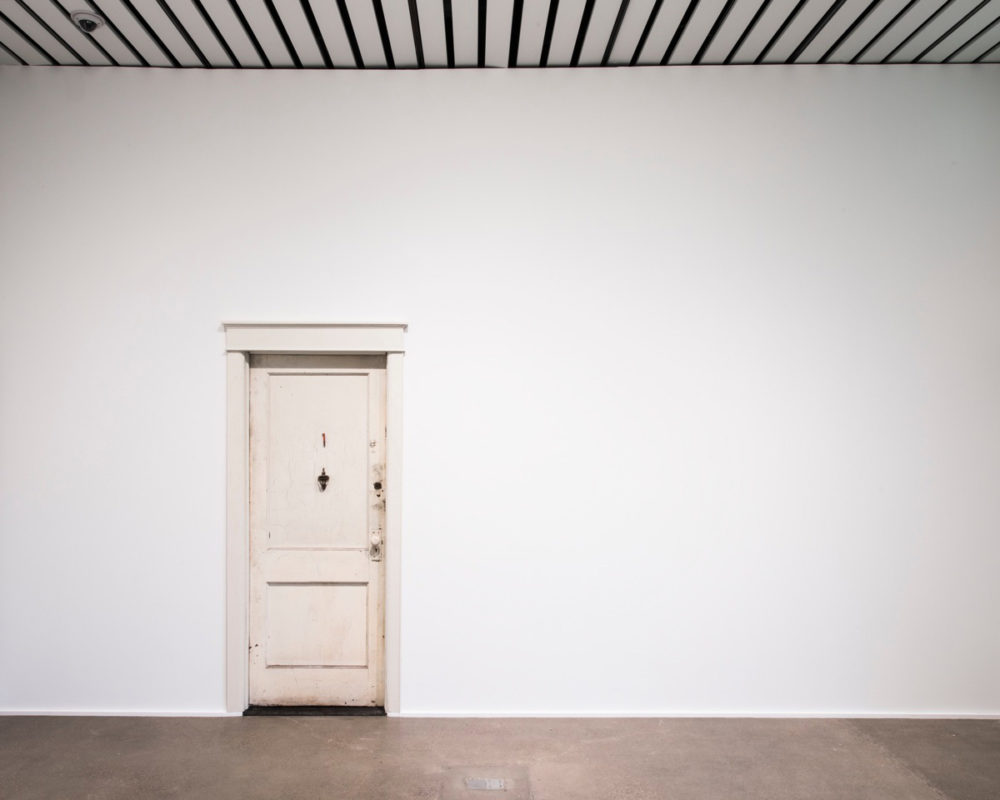
Unit 1: 3583 Dubois, installation view
The project, with its repurposing of the entire contents of an abandoned apartment, also deals consciously with Detroit in decline and its current, complex state of quasi-renewal. It’s important to note that in making a work that references and attempts, in some way, to deal with Detroit, Ruhwald was as thoughtful in his choice of the actual space as he was with his conceptual version of it.
“I had been searching for a building for this project for more than two years before I managed to settle on this one,” he said.
Obviously, money was an issue and I was looking for a place that was not part of a thriving neighborhood — as I would be really disappointed to have the project construed as an act of gentrification. The Dubois Building was good for several reasons. It has enough space for the installation somebody to live there, which I needed to keep it safe while we were working on it. The neighborhood had essentially been decimated, and so I was not pushing anybody out by bringing attention to the area, and it was close to Eastern Market, so that people can easily locate it.
Following the end of the show, which runs through January 8, 2017, and what will surely be a lengthy deinstallation process at MOCA, the exhibition will return to its permanent home in Detroit, to live and eventually be displayed within its original confines.
The entry hallway of Unit 1: 3583 Dubois is populated by a field of window weights — dense metal weights that were used to counter-balance and ease the mobility of the heavy wooden windows of old buildings, often a target for scrappers. These weights are secreted inside window casements, thus typically invisible to those who never intervene with these spaces, but for anyone who has handled one, their presence overhead represents a kind of quiet menace — were one to drop, it could cause terrible injury.
The exit through the entryway of Ruhwald’s haunting installation is a solemn gambit, and suggested, to me, the pressing responsibility when dealing with memory, reclaimed spaces, and the sanctity of objects. Unit 1: 3583 Dubois is a tremendous undertaking, and demonstrates not only Ruhwald’s capacity for transforming spaces, but his commitment to the necessary first step of feeling, understanding, and deeply respecting them.
Anders Ruhwald: Unit 1: 3583 Dubois continues at the Museum of Contemporary Art (MOCA) Cleveland (11400 Euclid Ave, Cleveland, Ohio) through December 31.

